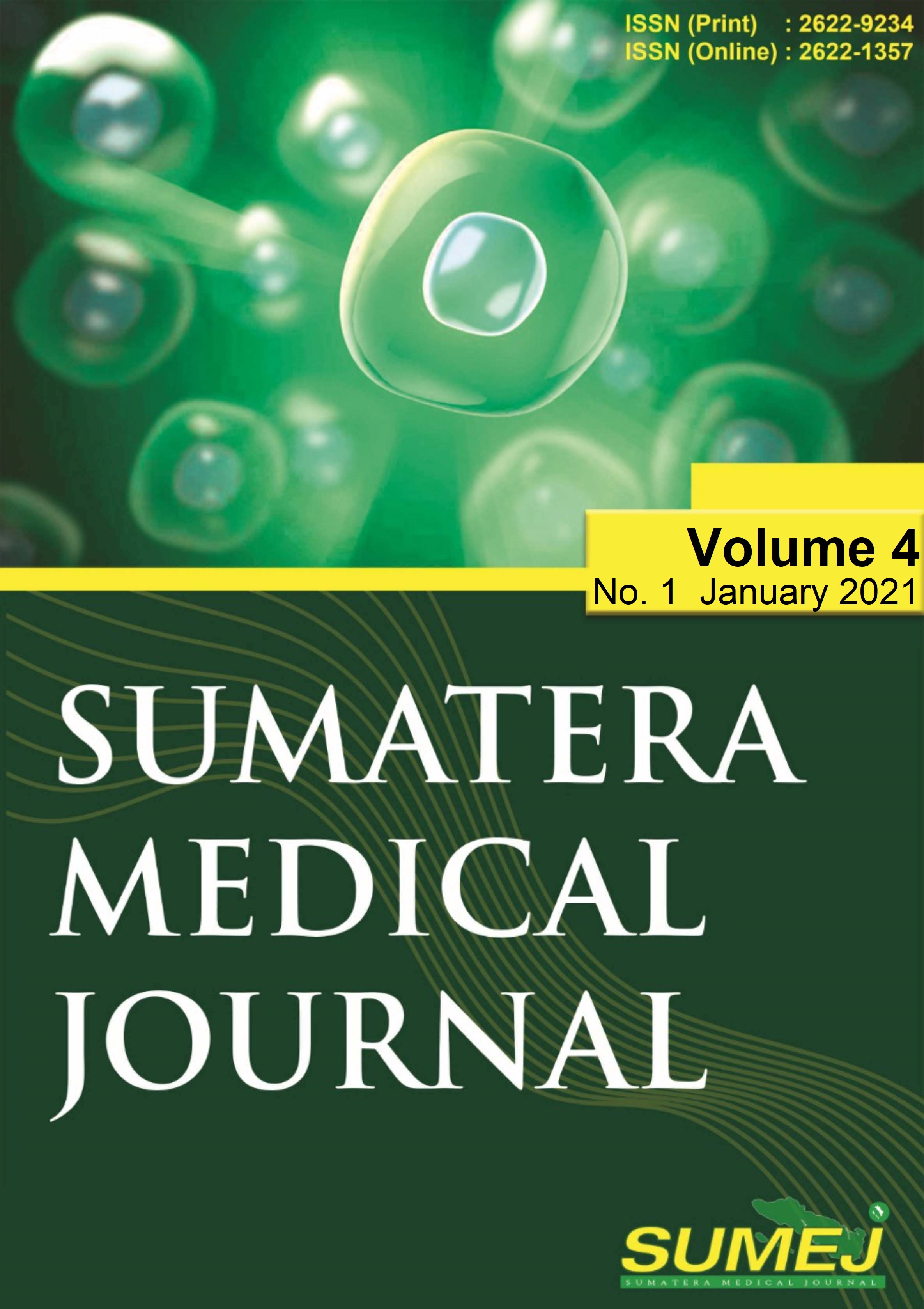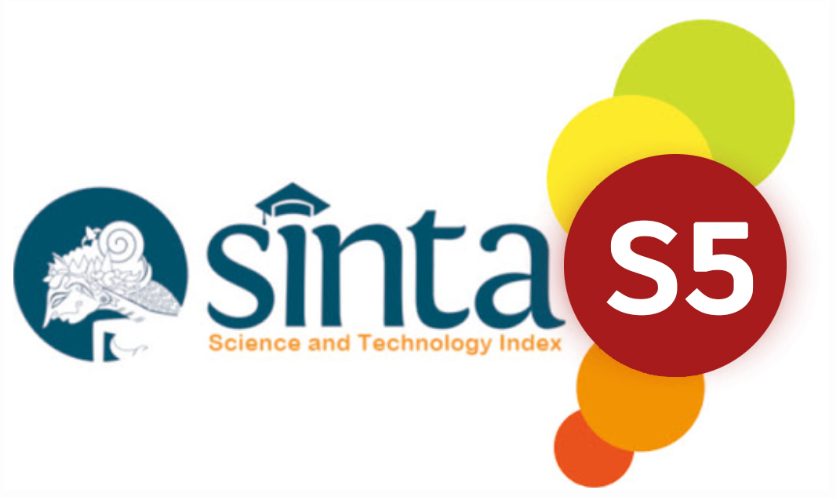C-Reactive Protein and Leukocyte as Predictors of Complications in Peripheral Arterial Disease
DOI:
https://doi.org/10.32734/sumej.v4i1.5111Keywords:
Peripheral Arterial Disease, Complication, C-Reactive Protein, LeukocyteAbstract
Peripheral Arterial Disease (PAD) is the narrowing of peripheral blood vessels which prevalence is high in the elders. In 2010, it was estimated that 202 million people were suffering from PAD, most of which are in developing countries, especially the Southeast Asia region. Inflammation markers such as leukocyte and C-Reactive Protein (CRP) can predict the incidence of PAD but their use in determining prognosis remains unclear. Complications in PAD include amputation, increased cardiovascular events, and even death. Aim: This study aims to determine the relationship between leukocyte and CRP level on complications in PAD, in the forms of amputation, cardiovascular events, and mortality. Methods: This is a meta analysis study which uses online literature sourced from Pubmed, Science Direct, Cochrane, and Google Scholar. Results: Based on the data analysis, there is a significant relationship between CRP with the incidence of amputation (HR 1.24, 95%CI: 1.02-1.49, p=0.03) and hs-CRP with cardiovascular events (HR 1.33, 95%CI: 1.10-1.60, p=0.003). Leukocyte on the other hand shows no significant relationship with the incidence of amputation (OR 1.10, 95%CI: 0.98-1.23, p=0.10) and mortality (OR 1.14, 95%CI: 0.97-1.35, p=0.12)
Downloads
References
Decroli, E., “Iskemia pada Jari Tangan Penderita Diabetes Melitus: Suatu Keadaan Peripheral Arterial Diseaseâ€. Jurnal Kesehatan Andalas. 2015. https://doi.org/10.25077/jka.v4i2.314
Criqui, M. H., & Aboyans, V., “Epidemiology of Peripheral Artery Diseaseâ€. Circulation Research. 2015. https://doi.org/10.1161/CIRCRESAHA.116.303849
Aryani, E., & Margawati, A.,“Hubungan Antara Dislipidemia Dengan Status Penyakit Arteri Perifer (PAP) Pada Pasien Diabetes Melitus Tipe 2 Terkontrol Sedangâ€. Jurnal Kedokteran Diponegoro.2016.
Kullo, I. J., Bailey, K. R., Kardia, S. L. R., Mosley, T. H., Boerwinkle, E., & Turner, S. T., “Ethnic differences in peripheral arterial disease in the NHLBI Genetic Epidemiology Network of Arteriopathy (GENOA) studyâ€. Vascular Medicine. 2003.https://doi.org/10.1191/1358863x03vm511oa
Iida O, Soga Y, Hirano K, et al. “Midterm outcomes and risk stratification after endovascular therapy for patients with critical limb ischaemia due to isolated below-the-knee lesionsâ€. European journal of vascular and endovascular surgery, vol. 43, no. 3, pp.313-321. 2012.
Shimamoto ,S., Yamada ,S., Hiyamuta ,H., Arase ,H., Taniguchi ,M., Tokumoto ,M., Nakano ,T., Tsuruya ,K., Kitazono ,T., “Association of serum phosphate concentration with the incidence of intervention for peripheral artery disease in patients undergoing hemodialysis: 10-year outcomes of the Q-Cohort Studyâ€. Atherosclerosis ;304: pp.22-29, 2020. https://doi.org/10.1016/j.atherosclerosis.2020.04.022.
Won KB, Chang HJ, Hong SJ, Ko YG, Hong MK, Jang Y, Choi D. “Prognostic usefulness of metabolic syndrome compared with diabetes in Korean patients with critical lower limb ischemia treated with percutaneous transluminal angioplastyâ€. Yonsei Med J .2014., vol. 55, pp.46–52.
Otaki ,Y., Watanabe ,T., Takahashi ,H., Yamaura ,G., Nishiyama ,S., Arimoto ,T., et al. Serum carboxy-terminal telopeptide of type I collagen (I-CTP) is predictive of clinical outcome in peripheral artery disease patients following endovascular therapy. Heart Vessels .2017. vol. 32, no. 2, pp.149e56. DOI 10.1007/s00380-016-0858-2.
Urbonaviciene ,G., Frystyk, J., Flyvbjerg ,A., Urbonavicius ,S., Henneberg EW, Lindholt JS. Markers of inflammation in relation to long-term cardiovascular mortality in patients with lowerextremity peripheral arterial disease. Int J Cardiol .2012. vol.160, noi.2, pp.89e94. https://doi.org/10.1016/j.ijcard.2011.03.030.
Skoglund ,P.H., ArpegÃ¥rd ,J., Östergren ,J., Svensson ,P. “Amino-terminal Pro-B-type natriuretic peptide and high-sensitivity Creactive protein but not cystatin C predict cardiovascular events in male patients with peripheral artery disease independently of ambulatory pulse pressureâ€. Am J Hypertens .2014., vol.27, no. 3, pp.363e71. https://doi.org/10.1093/ajh/hpt278.
Amaranto ,D.J., Wang ,E.C., Eskandari ,M.K., Morasch ,M.D., Rodriguez ,H.E., Pearce ,W.H., et al. “Normal preoperative white blood cell count is predictive of outcomes for endovascular procedures.†J Vasc Surg .2011.;54, pp.1395–403. https://doi.org/10.1016/j.jvs.2011.04.063.
Lin ,C.W., Hsu ,L.A., Chen ,C.C., Yeh ,J.T., Sun ,J.H., Lin ,C.H., et al. “Creactive protein as an outcome predictor for percutaneous transluminal angioplasty in diabetic patients with peripheral arterial disease and infected foot ulcersâ€. Diabetes Res Clin Pract. 2010.;90, pp.167–72. https://doi.org/10.1016/j.diabres.2010.08.002.
Saskin ,H., Ozcan KS, Duzyol ,C., Baris ,O., Koçoğulları UC. “Are inflammatory parameters predictors of amputation in acute arterial occlusions?†Vascular. 2017, vol.25, no.2, pp.170-177. doi: 10.1177/1708538116652995.
Taşoğlu ,I., Sert, D., Colak ,N., Uzun ,A., Songur ,M., Ecevit ,A. “Neutrophil-lymphocyte ratio and the platelet-lymphocyte ratio predict the limb survival in critical limb ischemia.†Clin Appl Thromb Hemost .2013.;20, pp.645–650. https://doi.org/10.1177%2F1076029613475474.
Bhutta ,H., Agha ,R., Wong ,J., Tang ,T.Y., Wilson ,Y.G.,Walsh ,S.R. “Neutrophil lymphocyte ratio predicts medium-term survival following elective major vascular surgery: a cross-sectional study.†Vasc Endovasc Surg .2011. vol.45, no.3, pp.227e31. https://doi.org/10.1177%2F1538574410396590.
Downloads
Published
How to Cite
Issue
Section
License
Copyright (c) 2021 Sumatera Medical Journal

This work is licensed under a Creative Commons Attribution-NonCommercial-NoDerivatives 4.0 International License.
The Authors submitting a manuscript do so on the understanding that if accepted for publication, copyright of the article shall be assigned to Sumatera Medical Journal (SUMEJ) and Faculty of Medicine as well as TALENTA Publisher Universitas Sumatera Utara as publisher of the journal.
Copyright encompasses exclusive rights to reproduce and deliver the article in all form and media. The reproduction of any part of this journal, its storage in databases and its transmission by any form or media, will be allowed only with a written permission from Sumatera Medical Journal (SUMEJ).
The Copyright Transfer Form can be downloaded here.
The copyright form should be signed originally and sent to the Editorial Office in the form of original mail or scanned document.











